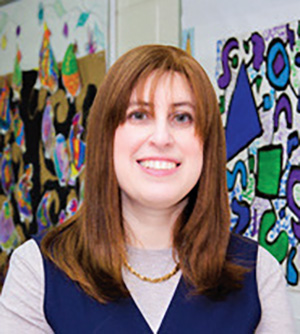
Why do generations of Jewish parents sacrifice to provide their children with a Jewish education? They do so because they view it as a key element in their parental role. Parents know they must daven for their children and place their children in an environment that nurtures their values. The most recently ended holiday of Chanukah, with its roots in the word dedication, reminds parents and pedagogues of that long-standing commitment to educating each Jewish child for a Torah life. A Torah life means commitment to Jewish observance. A Torah life means dedication to lifelong learning. A Torah life means an introspective, self-reflective approach to personal development. Parents choose a school that supports their beliefs and will provide this optimal space for their child’s social, emotional and academic growth.
What defines this meaningful Torah-true education? How can a school be academically rigorous and at the same time celebrate the whole child? The metacognitive framework for learning encompasses this broad understanding of children’s development. This thoughtful Torah-based approach, which values depth, making thinking processes explicit and self-reflection, is shared by high-quality teachers. The commitment, planning and intentionality of high-quality educators sets a school on the path to greatness. These teachers are cognizant of time and know that every minute of learning opportunity is precious and worthy of being well-planned.
Recently, one of RPRY’s dedicated science teachers carefully crafted her lessons for introducing the students to homeostasis during Chanukah. Their learning goal was to understand homeostasis and the processes that support it. She decided to have the students use their inductive reasoning skills to deduce the requirements for homeostasis. She had the students engage in numerous kinesthetic and athletic activities, ranging from building activities to yoga activities, and note what was consistently required. Once the students had these numerous concrete experiences, they were then able to transition to a text-based active-reading activity, where they were better able to monitor and then reflect on their own understanding of the topic.
Another middle school teacher intentionally chose the class’s current novel “Hope’s Crossing” in language arts, which jives with what the students are learning in social studies. She explicitly teaches planning, monitoring and self-reflection as part of the reading process. This active reading entails listening to the inner dialogue of the mind. Students must pay attention to their own thoughts. Before beginning to read, students must activate their prior knowledge and connect to any information with which they are already familiar. They ask questions before they start reading based on this prior knowledge, any titles or pictures. As students read, they continue to jot down their thoughts, the connections to their own experiences, their connections to prior knowledge or previously read material in the story, and questions that occur to them. Because the students have been engaged in these practices, they are more skillful at higher-level questioning.
As part of a re-envisioning of our math program, RPRY lower school teachers are “think math” teachers. They encourage students to make mental math visible. This is advantageous for all students. For those who need extra support, practicing strategies with manipulatives teaches these students the math strategies that other students may do more intuitively. For students who are naturally intuitive about adding or subtracting numbers, it is vital that they learn to verbalize and express the mechanism for their responses. This prepares them well for further complexity. For example, young students learn how to use a 10-frame to add two digits that will add up to a number greater than 10. The strategy of adding 10 and another number is one that intuitive math students may use automatically but may not have language to express. Students also learn to develop a story to match their equation as they translate between the symbols of math language and the English language. Another similar example occurs with two-digit subtraction. An intuitive child may subtract the tens, then subtract the ones, and then subtract the two partial differences to get the correct answer. All children benefit from using base ten blocks to see the number expansion and visualize what intuitive students may already do mentally. The intuitive student benefits from verbalizing and elaborating further. All children profit from this clarity of thinking processes.
When considering the level of work required to have classrooms of such caliber, why do people choose to enter the field of Jewish education, whether as teachers or as administrators? Many talented, intellectually capable people can certainly choose more lucrative fields in which to be successful, rather than Jewish education, yet they consciously choose to follow their passion and dedicate their skills to the future of the Jewish people, our children. Being a Jewish educator requires great dedication, whether one teaches general or Judaic studies. Chanukah reminds us of the personal dedication of the educators in our schools.
By Chana Luchins
Chana Luchins is a consummate educator with over 20 years of experience in the field of education, working with students from early childhood through grade 12, in both general and Judaic studies. Additionally, she has provided professional development for colleagues and mentored fellow classroom and special education teachers. She holds a master’s degree in special education from the Graduate School of Education at Touro College. Mrs. Luchins has extensive training in various educational specialties. Mrs. Luchins joined the RPRY family in 2008 after a successful career at SAR Academy.











